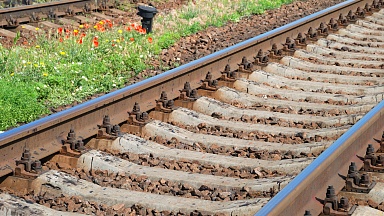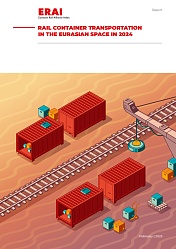As its name suggests, the Eurasian Agroexpress is all about transporting food products between states belonging to the EAEU, China, Vietnam and other countries of Central and Southeast Asia. It was launched officially in 2022, despite several Agroexpress rail services transiting in the past between Russia-China, Russia-Uzbekistan and Kazakhstan.
The project is currently led by four companies: Kazakhstan’s KTZ Express, Russia’s RZD Logistics and Slavtrans-Service and Belarusia’s Bremino Group LLC. It has also partnered up with the Eurasian Development Bank (EDB) while the EAEU monitors its development.
Russia plays an integral role in the EAEU and the broader Eurasian region in terms of transport. Understandably, the Eurasian Agroexress’ development comes hand in hand with the development of the International North-South Transport Corridor (INSTC), which Russia uses heavily at the moment, attempting to dominate trade in the region and beyond.
As a result, plans to expand Agroexpress services towards Iran, Turkmenistan, India, and the UAE are not surprising, also because all those countries keep trading with the sanctioned state and benefit from its investments in INSTC.
Are they really new markets?
2022 was a positive year for the Eurasian Agroexpress project since, as Andrey Slepnev, member of the board for trade at the Eurasian Economic Commission (EEC) said, «beat the planned indicators by transporting 525,500 tonnes of food products, including 282,900 tonnes of refrigerated cargo». The transported cargo included «poultry, beef, milk powder, oil and fats, fruits and vegetables, and leguminous products», added Slepnev.
The project’s positive feedback led EEC to propose its expansion to other markets, a proposal that was supported by the EAEU member states. However, when looking at the expansion plans, the new markets that the Eurasian Agroexrpess aims to reach are more or less already relevant to the EAEU states and Russia. Iran and India are already working closely with Russia; Turkmenistan has already acquired a place in the INSTC, while the UAE comes as a natural development considering its proximity to the Iranian ports that belong to the INSTC.
Agroexress follows INSTC
As mentioned, it seems that there’s a pattern that the agro logistics project follows, closely intertwined with the INSTC. The EAEU and EEC confirmed this. «The heads of the EAEU support the expansion of the Eurasian Agroexpress integration project to include shipping operations carried out along the International North-South Transport Corridor (INSTC) towards Turkmenistan, the Islamic Republic of Iran, the United Arab Emirates and the Republic of India», stated the EEC.
Additionally, Andrey Slepnev underlined that «[...] the demand for the North-South corridor has increased significantly. Trial shipments to Iran and India were made within the project’s framework and confirmed the route’s attractiveness. Our countries have a great potential for expanding their transit and export capabilities».




